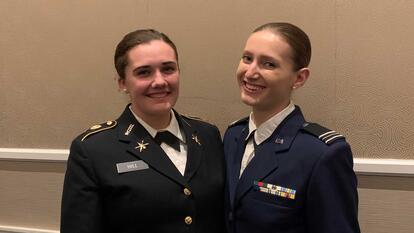
Beyond Kamala Harris: Maneesh Arora’s Research Sheds Light on Indian Americans’ Political Opinions and Engagement
When Sen. Kamala Harris was sworn in as vice president on January 20, people across the United States celebrated this historic first for African Americans, South Asian communities and individuals, and women.
New research by Maneesh Arora, assistant professor of political science at Wellesley, and his colleague Sara Sadhwani, assistant professor of politics at Pomona College, examines the effects of both Harris’s rise and an increase in Indian American representation in politics—four Indian Americans were reelected to Congress, and 12 new members were elected to state legislative positions. They found that we can expect a greater number of members of this community to get more involved in politics and to have more influence nationally.
Arora and Sadhwani, who met in graduate school at the University of California, Irvine, surveyed 1,003 Indian Americans living in the United States. Indian Americans make up only about 1 percent of the population in the U.S. (Asian Americans make up 5 percent), but this group is politically important for a number of reasons, Arora noted, and their involvement and influence in politics is on the rise. “Indian Americans are concentrated in key states—California, Texas, Georgia, Pennsylvania, Florida, New York—and they are becoming increasingly politically engaged through voting and contributing to political causes,” Arora said.
Though large majorities of Indian Americans voted for Barack Obama and Hillary Rodham Clinton ’69, and 53 percent of participants in the survey consider themselves Democrats, the Democratic party needs to actively mobilize and engage Indian Americans in a way they have not previously, Arora said. (President Joe Biden and Harris have already appointed many Indian Americans to cabinet positions.) Going forward, he said, candidates and the party cannot simply assume Indian Americans will continue to support them without representation and engagement.
“Indian Americans are concentrated in key states…and they are becoming increasingly politically engaged through voting and contributing to political causes.”
Maneesh Arora, assistant professor of political science
In fact, Arora said, one surprising finding from the survey was that 59 percent of Indian Americans would back an Indian American candidate regardless of their party affiliation.
“This desire for descriptive representation appears to stem from Indian Americans perceiving their group as having common political, economic, and cultural interests. It is also a departure from scholarship on Black, Latinx, and other Asian American communities,” he said.
Consider this in the context of the recent Senate election in Georgia. In the Washington Post, Arora and Sadhwani wrote that there are 58,000 registered Indian American voters in Georgia (who make up the largest subgroup of Asian Americans and Pacific Islanders in the state). “There are a number of Asian American organizations that were working on the ground there day and night,” Sadhwani said in a write-up of their research for Pomona College. “Organizations like the Asian American and Pacific Islander Victory Fund, and the Indian American Impact Fund who spent $2.5 million just registering and mobilizing Indian American voters in Georgia.”
Arora and Sadhwani’s research is significant because Indian Americans and South Asian Americans are one of the country’s fastest-growing groups. But the work is also deeply personal, Arora said. “Really so much of this starts with our upbringing, as the children of immigrants, trying to understand our identities and where we fit in American society, and how diversity in communities plays out in political attitudes and behaviors,” he said.
When reports came out that some individuals at the January 6 insurrection on Capitol Hill were waving an Indian flag, Indian Americans as well as Indian celebrities and members of parliament reacted strongly, denouncing the use of the flag in the riot. This is a reminder that Indian Americans, like all other groups, are not monolithic, and that reports of shifting support toward Trump are overblown, Arora noted. “Despite President Trump’s efforts to woo the Indian community, often by tapping into the support many have for India’s Prime Minister Narendra Modi, only 18 percent of our sample indicated they would vote for Trump and, as far as we know, there were only 10 Indian Americans who participated in the insurrection,” Arora said.
While Harris has inspired great enthusiasm and excitement, Arora believes she will also face great pressure—as an Indian American and a Black woman—in the same way that many trailblazers do. “There is so much pressure to represent a huge population,” Arora said, “and to be the exemplar member of that group, to face the built-in challenges of being a woman of color in a white and male-dominated field and knowing that many people will never support her simply because of her race and gender.”



